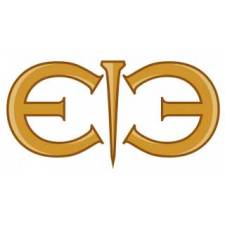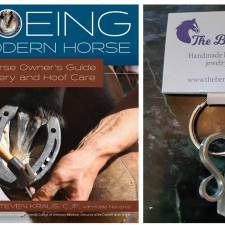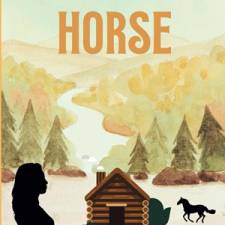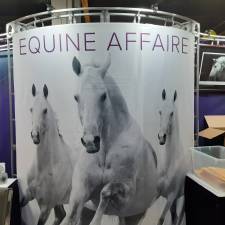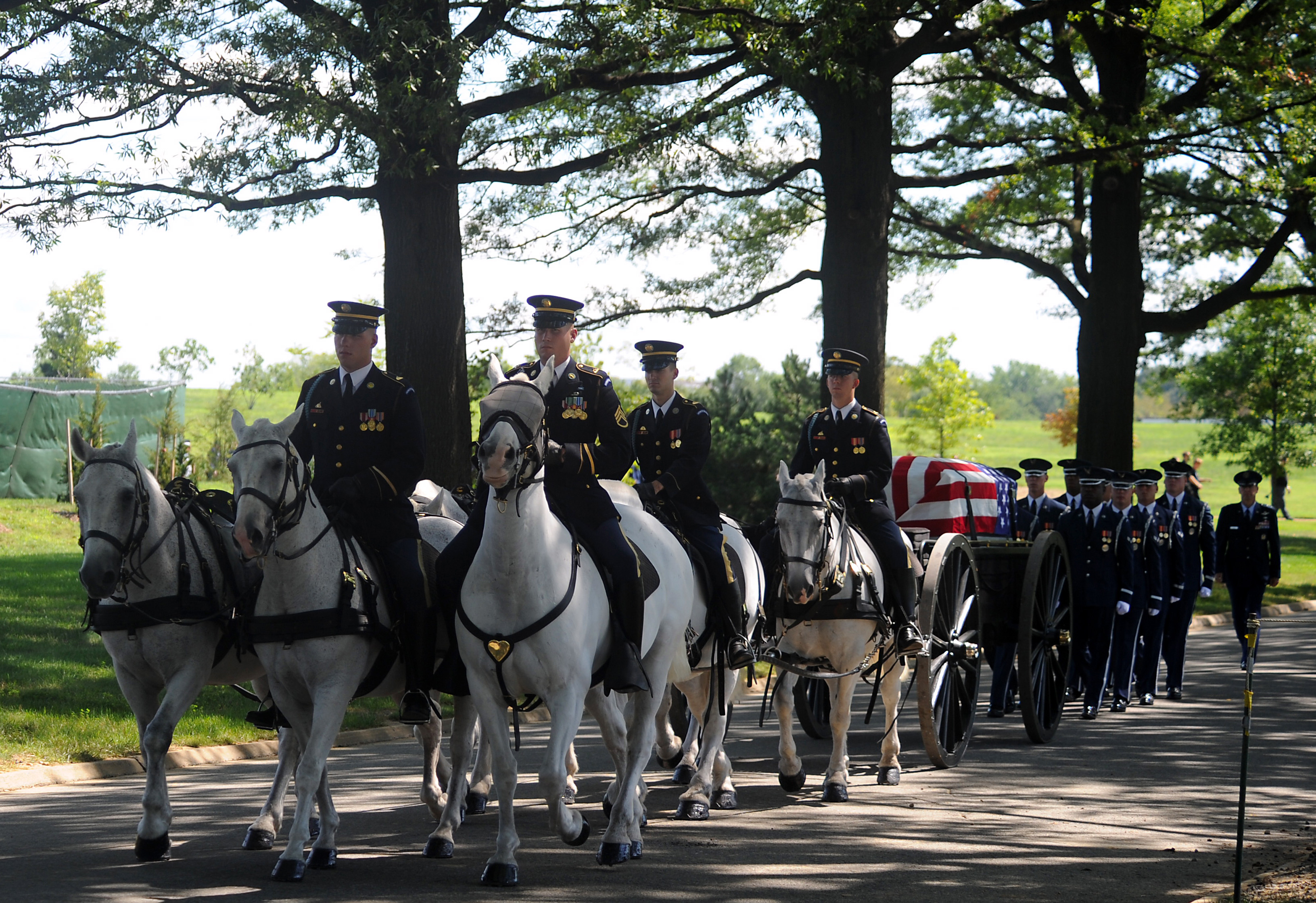
by Patricia N. Saffran
When a loved one does not return from being in the military, the grieving process for the surviving family can be overwhelming. Realizing the difficulties that these relatives and families endure, military veteran, Bonnie Carroll, founded and is president of Tragedy Assistance Program for Survivors, TAPS, in 1994. She is the surviving spouse of the late Brigadier General Tom Carroll.
Since its inception, the charity has helped over 70,000 family members with sensitive care in the form of support programs and events for the families of fallen American military heroes. President Barack Obama recognized TAPS and Bonnie Carroll’s outstanding work by awarding her the Presidential Medal of Freedom, November 24, 2015.
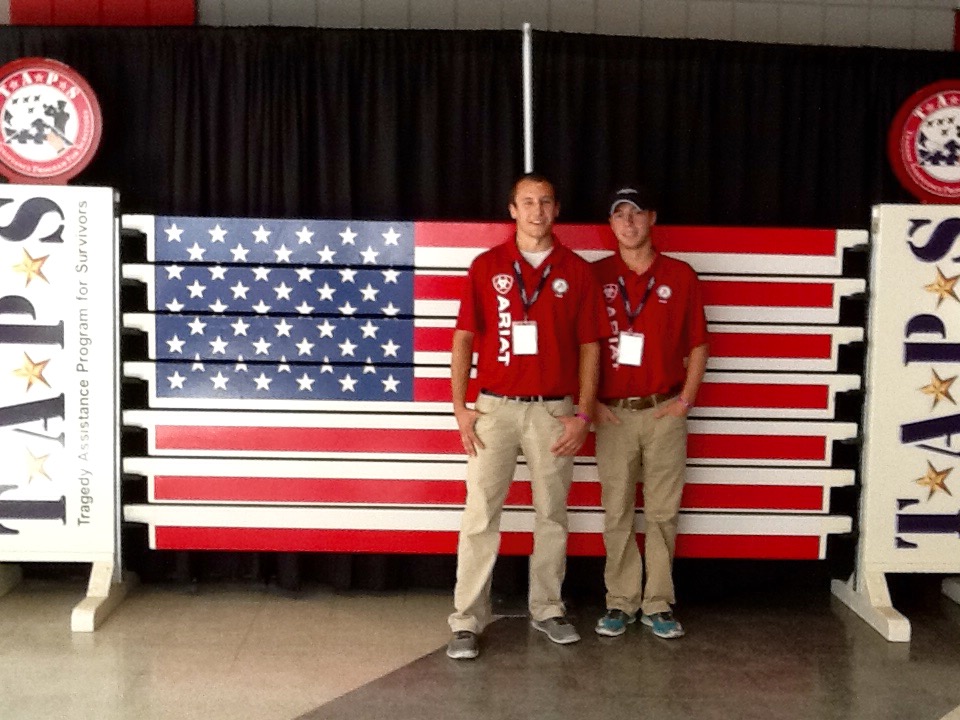
Among the TAPS activities are grief counseling, camps, and gatherings for all ages held around the country, and a range of activities surrounding horses, a special interest of Major Carroll, who holds a degree in equine sciences. The charity takes advantage of horses as natural healers. TAPS has been designated the Official Military Partner of the Washington International Horse Show. On Military Night during the horse show, riders in the International Jumper Speed Final compete to “Jump for TAPS” — each time they clear the TAPS jump, a thousand dollar donation is made to the organization. TAPS is also the official charity beneficiary of the Potomac Hunt Races, a yearly event held in Poolesville, MD. These races feature steeplechase, pony races, and the appearance of the local hunt with their hounds.
Since 2009, TAPS has had a relationship with the 3rd U.S. Infantry Regiment Old Guard Caisson Platoon, of Fort Meyer, VA, which is part of the Old Guard, the oldest active duty unit in the Army, from 1784. The ceremonial cavalry platoon participates in official parades, special events and presidential inaugurations, and it accompanies funerals at Arlington National Cemetery. They maintain constant vigil at The Tomb of the Unknowns. This platoon is the only full time US cavalry unit left after federally funded cavalry training was mainly abandoned around the time of WWII, when cavalry units were changed over to tanks. The caisson platoon, which has been in existence since 1948, participates in funerals at Arlington on a daily basis, usually thirty per day.
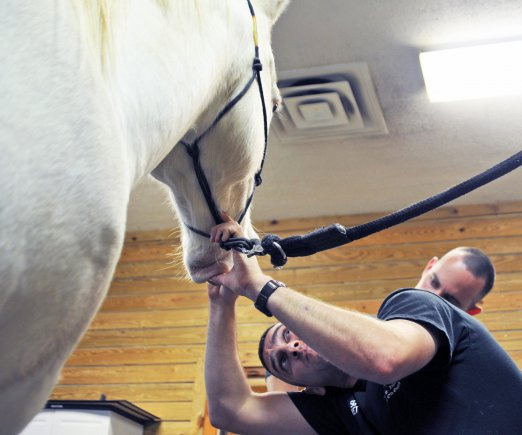
The Old Guard develops its platoon cavalry from trained infantry non-horsemen. Once chosen for the platoon, the soldiers study basic horse care, grooming, and how to polish the ceremonial brass and leather tack. There are about 50 horses and 50 soldiers. Specialist Max Hanneman explains, “Training lasts 10 weeks. We spend the first two weeks at Fort Belvoir, which is 40 miles away from Fort Meyer. There we sleep in stalls so we can learn what it’s like to be in a confined space like the horses. We train in Western saddles. As we progress, we learn to use our core, and do a lot of riding without our stirrups. They teach us to have a passive, Zen-like attitude, to be in control but to be one with the horse. For ceremonies we’re taught to ride in the postillion style [of ‘solemn military attention’] from the Spanish riding school, which is very erect.”
Their elegant riding style has been used since the platoon’s inception. Riders sit on a modified Captain George B. McClellan saddle. The captain studied various models in Europe and then designed the saddle in 1859 to incorporate a Spanish tree and the best features of the Continental cavalry saddles. Specialist Hanneman says, “This saddle isn’t comfortable for the rider but is more comfortable for the horse because there’s a slit in the center for ventilation so it’s not too hot.”
For funerals at Arlington, the Old Guard Caisson Platoon employs a horse-drawn hearse, a flat top converted caisson from 1918, which historically held ammunition or a 75 mm cannon. The horses are various and mixed breeds consisting of matched gray or black. Some of the breeds are Standardbreds, Quarter Horses, Lipizzaners, and pure and crossbred draft horses and crossbred Thoroughbreds.
Specialist Hanneman explains, “Horses are chosen for their size, temperament, conformation and color. We have a purebred Percheron that’s 18 hands, but many of the horses are crossbred.” They come to the unit at about three years old and are saddle broken, but then they must be trained to pull the caisson, and endure firing and other noise they will hear at funerals. The six horses are paired into three teams — the lead team, the swing team in the middle, and the wheel team, closest to the caisson (the same terminology used for horses in a six-in-hand Western stagecoach). While all six horses are harnessed and have saddles, only the horses on the left are mounted.
The horses on the right traditionally carried supplies and feed during military action. There is also a Section leader, a mounted rider who rides in front of the procession. The funeral service features a precision dismount of the caisson soldiers. They and surrounding platoon members present arms and then the casket team moves in exact synchronization to edge the casket to its final resting place. They then fold the draped flag from the casket with the same precision and hand it to the survivors. This highly ritualized movement combined with the service from the chaplain, the playing of Taps, and firing of arms give comfort to the bereaved.
The playing of the bugle call, Taps, came about during the Civil War with the Army of the Potomac. Union Army Brigadier General Daniel Butterfield reconfigured the melody with the brigade bugler, Private Oliver Wilcox Norton, as he did not like the call to lights out. Taps came to be used for funerals on the field (when firing arms would have alerted the enemy to their position). It became a call to the departed soldier’s lasting sleep.
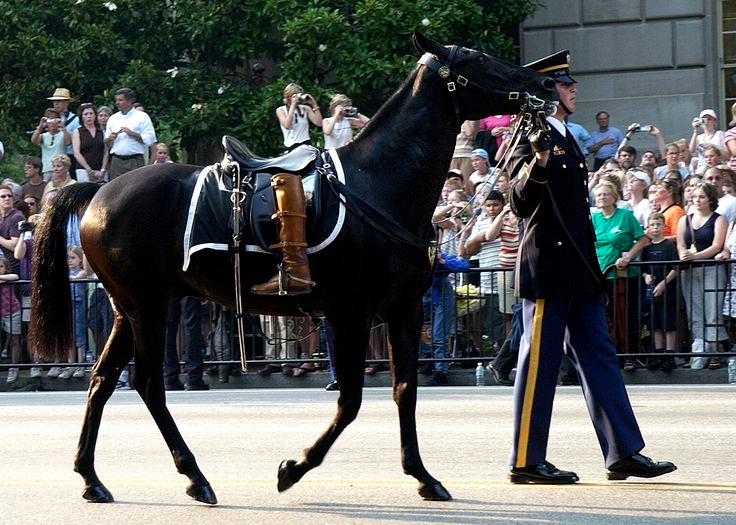
When the funeral is of a colonel or higher rank, and including the president, a caparisoned horse is led behind the caisson. The caparisoned horse is a ceremonial riderless horse led with an English saddle, bridle, a draped cover of varying size (the cape), and boots mounted backwards in the saddle. It signifies that the warrior will never ride again. This tradition is very old and historically involved sacrificing the horse for burial alongside the deceased warrior. In ancient Rome, it was practiced for the fallen leader, but without the boots. The horse was led, then sacrificed and consumed in a big feast. The riderless horse also represents the moment when the officer fell in battle in ancient times, and his horse who was known to his troops in the rear, was sent back riderless to reveal that their leader was killed in action.
Rome was not the only area where a funerary procession featured a riderless horse. Mircea Eliade in From Primitives to Zen and Shamanism: Archaic Techniques of Ecstasy, Princeton University Press, 2004, provides an elaborate description of the shaman sacrificing a horse for purification from the multicultural area Altai, now Siberia. Horses were also led and sacrificed to accompany the leader to the afterlife, as occurred with Genghis Khan’s funeral. American Plains Indians practiced equine sacrifice, a custom of probable Asiatic origin, for their expired chief. With a bow to the symbolic past, a caparisoned riderless horse at a military funeral evokes both sadness and beauty.
President Lincoln was an expert horseman. When he died, his favorite horse, Bob, was led at his funeral by his groom. Perhaps the most famous Old Guard Caisson horse, “Black Jack,” was led at President Kennedy’s funeral, and the horse was present for the funerals of other presidents as well. “Black Jack,” who was a Morgan-American Quarter Horse cross gelding is buried at Fort Meyer with a commemorative plaque.
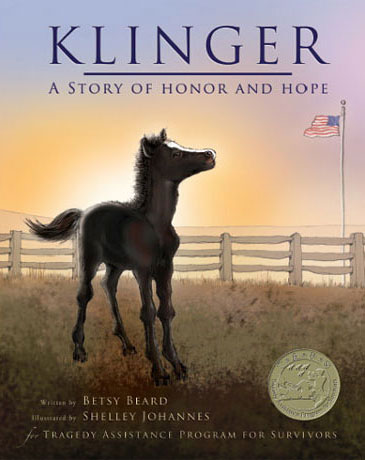
One of the caisson horses currently serving is the adored seventeen year old, Klinger, a Morgan Percheron cross, 16 hands, with a magnetic presence. He has been known to show up at events, including the Washington International Horse Show, WIHS. Kelly Griffith, TAPS Internal Communications Manager, attests to the spell that Klinger casts on all around him due to his lovely personality. She is the surviving sister of USMC Major Samuel Griffith. Having witnessed Klinger in person, Ms. Griffith explained, “We take families to the Pentagon for a tour during Memorial Day weekend, and for the past few years, the Army has brought Klinger and another caisson horse.” Klinger has proved so popular that TAPS published a children’s book named Klinger, A Story of Honor and Hope, 2010, by Betsy Beard, whose only son, Army Specialist Bradley Beard, was killed in Iraq. In the fictional book, Klinger dreams of becoming a racehorse but finds contentment as a caisson horse who helps grieving families. The WIHS continues to honor the real noble Klinger with what they describe as the “Klinger Perpetual Award for Honor and Service which is awarded to a horse, organization or person that best embodies the values as demonstrate by Klinger and his fellow four-legged soldiers.”
Occasionally, after serving for over a decade, a caisson horse comes up for adoption. The Old Guard takes applications from the public. The process is competitive as they want to make sure the retirement home is suitable.

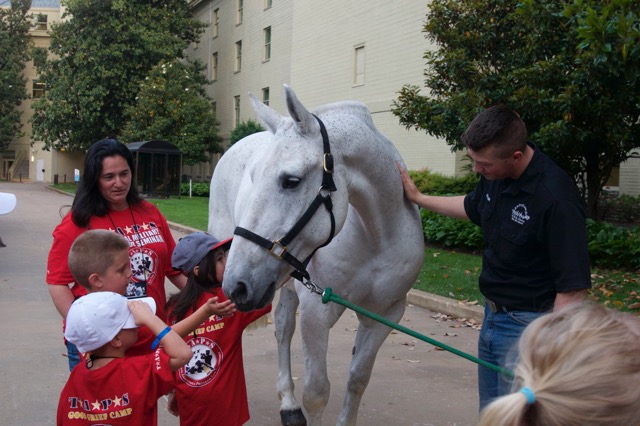
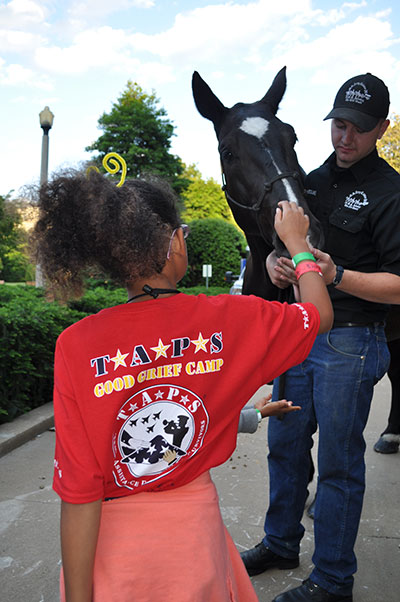
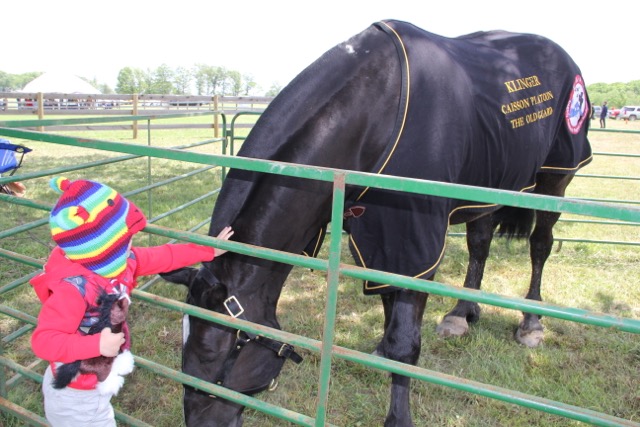
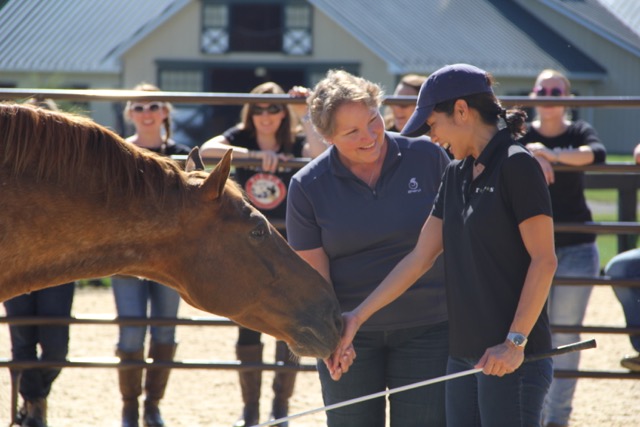
You can find more interesting and informative articles in our section on Recreation & Lifestyle.









